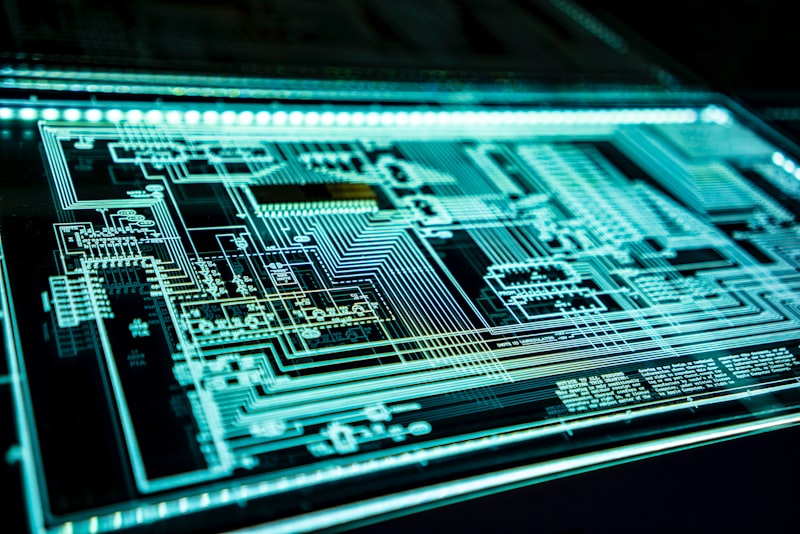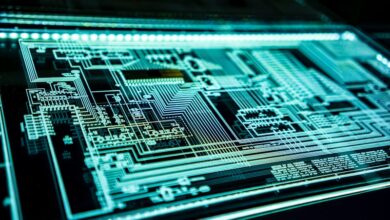Robotic Surgical Systems and Medical Robots

Introduction:
Have you ever imagined a future where robots are working side by side with doctors in the operating room, assisting them in intricate surgical procedures? Well, that future is now becoming a reality thanks to the incredible advancements in robotic surgical systems and medical robots. These cutting-edge technologies are transforming the field of medicine, enhancing precision, improving patient outcomes, and revolutionizing the way surgeries are performed. Let’s delve into the fascinating world of robotic surgical systems and medical robots.
Unleashing Precision and Accuracy:
Robotic surgical systems are designed to enhance a surgeon’s skills by providing exceptional precision and accuracy. Using state-of-the-art robotic arms controlled by the surgeon, these systems offer unparalleled dexterity, reducing the risk of human error. With their ability to make minute movements beyond the capability of human hands, surgeons can perform complex procedures with greater safety and efficiency. It’s like having a skilled assistant with steady hands who never tires or trembles.
Minimally Invasive Surgeries:
One of the most remarkable benefits of robotic surgical systems is their compatibility with minimally invasive procedures. These systems utilize smaller incisions, resulting in reduced trauma to the patient’s body, less pain, and faster recovery times. The robotic arms can enter narrow spaces within the body, allowing surgeons to reach areas that would otherwise be difficult to access. This means shorter hospital stays and a quicker return to normal life for patients.

Collaborative Partnerships:
Medical robots not only assist surgeons during operations but also serve as collaborative partners throughout the entire healthcare process. They can provide precise pre-operative planning, helping surgeons visualize the procedure and optimize surgical strategies. During surgery, they offer real-time feedback, enhancing decision-making and ensuring the best possible outcomes. Even post-surgery, medical robots aid in rehabilitation and recovery, enabling personalized care tailored to each patient’s needs.
Enhancing Accessibility:
Robotic surgical systems and medical robots are democratizing healthcare by enhancing accessibility to advanced procedures. With these technologies, geographical barriers can be overcome as expert surgeons can remotely guide and perform surgeries in distant locations. Patients in underserved areas can now receive the same level of care as those in major medical centers, reducing disparities and improving overall healthcare quality.

Conclusion:
Revolutionizing Healthcare: The Rise of Robotic Surgical Systems in Modern Medicine
Imagine a world where precision, efficiency, and innovation converge to revolutionize healthcare. Welcome to the era of robotic surgical systems, an astounding technological advancement that is reshaping modern medicine. In this article, we will explore how these cutting-edge robots are transforming surgical procedures for the better.
Robotic surgical systems, equipped with advanced artificial intelligence and robotic arms, have emerged as game-changers in the medical field. These sophisticated machines offer unparalleled precision, surpassing human capabilities, and enabling surgeons to perform intricate procedures with enhanced accuracy. By augmenting the skills of skilled surgeons, robotic systems are raising the bar for surgical outcomes.
The impact of robotic surgical systems can be seen across various disciplines, ranging from cardiac and gynecological surgeries to orthopedic and urologic procedures. With their tiny instruments and high-definition cameras, these robots provide surgeons with a magnified, three-dimensional view of the operating site. This level of visual clarity enables surgeons to navigate complex anatomical structures with utmost ease and confidence.
Furthermore, robotic surgical systems minimize invasiveness, leading to reduced complications, shorter hospital stays, and faster recovery times for patients. The precise movements of the robotic arms, guided by surgeon input, ensure minimal trauma to surrounding tissues. Consequently, patients experience less pain, decreased scarring, and a quicker return to their daily lives.
Moreover, these robotic assistants are not replacing human surgeons; instead, they are complementary tools that enhance surgical expertise. Surgeons retain full control throughout the procedure, while the robot acts as their trusted partner, facilitating meticulous maneuvers and providing real-time feedback. By combining the strengths of human skill and robotic technology, surgeons can achieve unprecedented levels of surgical excellence.

Looking ahead, the future of robotic surgical systems holds tremendous promise. As technology continues to advance, we can expect even greater precision, expanded capabilities, and increased accessibility. The rise of artificial intelligence, machine learning, and virtual reality integration will further augment the capabilities of these robotic assistants, opening doors to new possibilities in surgery.
Robotic surgical systems are transforming the landscape of modern medicine. With their remarkable precision, improved patient outcomes, and synergistic collaboration with surgeons, these robots have become indispensable tools in the operating room. As we move forward, embracing the potential of robotic technology will undoubtedly lead us to a new era of healthcare, where innovation and compassion converge for the benefit of all.
From Sci-Fi to Reality: How Medical Robots Are Transforming Surgical Procedures
Introduction:
Imagine a world where surgeries are performed by robots, bringing to life what was once only possible in science fiction movies. Well, that future is here. Medical robots have made their way into operating rooms, revolutionizing surgical procedures and transforming the field of medicine. In this article, we will explore how these incredible machines are reshaping the landscape of healthcare.

Unleashing Precision and Accuracy:
One of the key advantages of medical robots is their exceptional precision and accuracy. These robots are designed to carry out complex surgical tasks with a level of precision that surpasses human capabilities. With the use of advanced imaging technology and real-time feedback systems, surgeons can guide these robots through intricate procedures, reducing the risk of errors and improving patient outcomes. It’s like having a highly skilled assistant with the steady hands of a master surgeon.
Enhancing Minimally Invasive Surgery:
Medical robots have played a vital role in advancing minimally invasive surgery. Traditionally, surgeons had to make large incisions to access the affected area during surgery. However, with robotic assistance, smaller incisions can be made, leading to reduced scarring, decreased pain, and faster recovery times for patients. These robots can reach areas that are difficult for human hands to access, allowing surgeons to perform surgeries with greater dexterity and flexibility. It’s as if they have an extra pair of versatile and nimble hands at their disposal.

Empowering Surgeons with Augmented Capabilities:
Medical robots serve as powerful tools that augment surgeons’ capabilities. They act as an extension of the surgeon’s hands, translating their precise movements into scaled-down actions inside the patient’s body. Surgeons can control these robots using intuitive interfaces, allowing them to navigate through intricate anatomical structures with ease. This collaboration between man and machine ensures safer and more efficient surgeries, pushing the boundaries of what is achievable in the operating room.
Advancing Remote Surgery:
Medical robots are also breaking geographical barriers by enabling remote surgery. With the help of high-speed internet connections and telecommunication technology, surgeons can now perform procedures on patients located thousands of miles away. This has significant implications for delivering healthcare in underserved areas and providing timely access to specialized surgical expertise. It’s like bringing the world’s best surgeons into operating rooms around the globe, regardless of physical distance.
Conclusion:
Medical robots have transformed surgical procedures, blending science fiction with reality. Their precision, ability to enhance minimally invasive surgery, augmented capabilities, and the potential for remote surgery are reshaping the way surgeries are performed. As technology continues to advance, we can expect even more remarkable developments in the field of medical robotics, ultimately leading to improved patient outcomes and a brighter future for healthcare. The age of robotic surgery has arrived, and it’s revolutionizing medicine one procedure at a time.
Precision and Perfection: Unraveling the Capabilities of Robotic Surgical Systems
Imagine a future where surgeries are performed with impeccable precision, leaving minimal room for error. Thanks to advancements in technology, we are now witnessing the rise of robotic surgical systems, revolutionizing the field of medicine. These cutting-edge machines are designed to enhance the capabilities of surgeons, enabling them to achieve unrivaled levels of accuracy and efficiency.
Robotic surgical systems, such as the da Vinci Surgical System, have become indispensable tools in the operating room. They consist of robotic arms equipped with small surgical instruments and a high-definition camera that provides a magnified, three-dimensional view of the surgical site. This allows surgeons to perform complex procedures with enhanced dexterity and precision.
One of the key advantages of robotic surgical systems is their ability to minimize invasiveness. Traditional open surgeries often involve large incisions, leading to more pain, longer recovery times, and increased risk of complications. In contrast, robotic-assisted procedures require only a few small incisions, reducing trauma to surrounding tissues and improving patient outcomes. This minimally invasive approach also results in shorter hospital stays, allowing patients to resume their daily activities sooner.
The precision offered by robotic surgical systems is truly remarkable. The robotic arms can make incredibly precise movements that surpass human capabilities. Surgeons have fine control over the instruments, which can rotate and bend with greater flexibility than the human hand. This level of control enables intricate maneuvers in tight spaces, facilitating delicate procedures that demand the utmost precision.
Furthermore, robotic surgical systems provide surgeons with real-time feedback and enhanced visualization. The high-definition camera offers a magnified view of the surgical site, revealing even the tiniest details. Surgeons can zoom in and navigate through different layers of tissue, ensuring thorough examination and accurate surgical interventions. Additionally, augmented reality features can overlay vital information onto the surgeon’s view, enhancing decision-making during complex procedures.
Robotic surgical systems have revolutionized the field of medicine by offering precision and perfection in surgical interventions. These advanced machines provide surgeons with enhanced dexterity, improved visualization, and minimal invasiveness. As technology continues to advance, we can expect further refinements in robotic surgical systems, unlocking new possibilities for safer, more precise surgeries. The future of medicine is indeed awe-inspiring, as these remarkable robots continue to push the boundaries of what is possible in the operating room.
The Future of Surgery: Exploring the Potential of Robotic-Assisted Medical Procedures
Imagine a world where surgical procedures are carried out with precision, speed, and minimal invasiveness. A world where robots work alongside human surgeons to revolutionize the field of medicine. This is the future of surgery, a realm where the potential of robotic-assisted medical procedures is being explored.
Robotic-assisted surgery has already made significant strides in various specialties, from general surgery to orthopedics and urology. By employing advanced robotic systems, surgeons are able to perform complex procedures with enhanced dexterity and accuracy. These robotic assistants act as an extension of the surgeon’s hands, allowing for precise movements in tight spaces that would otherwise be challenging or impossible for human hands alone.
One of the key advantages of robotic-assisted surgery is the ability to minimize invasiveness. Traditional open surgeries often involve large incisions, leading to longer recovery times and increased risk of complications. In contrast, robotic-assisted procedures utilize smaller incisions, resulting in reduced pain, faster healing, and shorter hospital stays. Patients can get back on their feet sooner and resume their daily activities with minimal disruption.
Moreover, robotic-assisted surgery offers improved visualization through high-definition 3D imaging. Surgeons can magnify the surgical site, providing a detailed view of the anatomy. This enhanced visualization enables better decision-making during procedures, leading to more precise interventions and improved patient outcomes.
But what about the human touch? While robots may seem impersonal, they actually enhance the surgeon’s capabilities rather than replacing them. Surgeons remain in complete control throughout the procedure, utilizing the robot as a tool to amplify their skills. It’s a collaboration between man and machine, combining the expertise of the surgeon with the precision and efficiency of robotic technology.
As we delve deeper into the future, the potential applications of robotic-assisted surgery continue to expand. From telesurgery, where surgeons operate remotely using robotic systems, to the integration of artificial intelligence and machine learning algorithms that can analyze vast amounts of patient data, the possibilities are truly awe-inspiring. The future holds the promise of further advancements that will continue to redefine the field of surgery.
The future of surgery lies in the realm of robotic-assisted medical procedures. With their ability to enhance precision, minimize invasiveness, and improve patient outcomes, robots are set to play a crucial role in the operating room. As the field continues to evolve, we can look forward to a future where the boundaries of what is possible in surgery are pushed even further, bringing hope and healing to countless lives.




